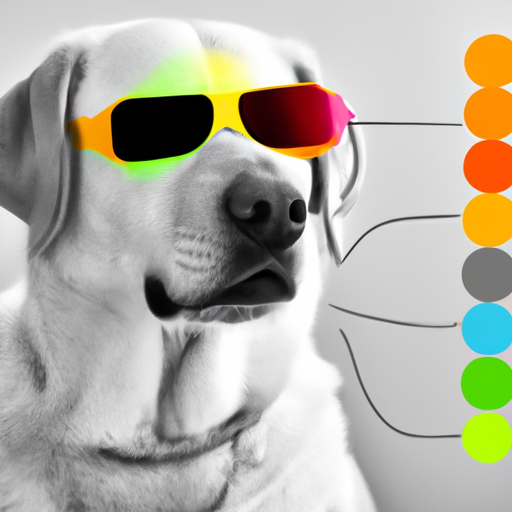“`
What Kind of Color Blind are Dogs?
Understanding Dog Vision
Firstly, it’s important to know that dogs perceive the world differently than you do. Their eyes are not designed to see the full spectrum of colors as humans do. Instead, they see a range of two primary colors: blue and yellow. Now, that doesn’t mean they only see these colors. They can distinguish between shades and tones within that spectrum, just in a more limited way than you do.
The Science Behind Dog Color Blindness
The reason for this difference lies in the eyes. Both humans and dogs have special light-catching cells called cones which are responsible for detecting color. Humans have three types of cones, allowing them to see a broad spectrum of colors. Dogs, however, only have two types.
Here is a simple table to illustrate the difference:
| Species | Number of Cones | Color Range |
|---|---|---|
| Humans | Three | Full Spectrum |
| Dogs | Two | Blue & Yellow |
How Dog Color Blindness Affects Their World
So, what does a world of blue and yellow look like? Imagine everything in a range of blue to white to yellow to gray. That red ball you’re throwing in the green grass? To your dog, it probably looks like a yellow ball in white grass. This is why brightly colored toys don’t always appeal to dogs as much as they do to us.
Living with a Color Blind Dog
Living with a color blind dog doesn’t require any special accommodations. Dogs don’t rely on color to navigate their world. They use their powerful sense of smell and hearing, along with a keen sense of motion detection. However, understanding their color perception can help you make better choices for things like toy colors, training aids, and even food.
- Choose toys in high contrast colors: Toys in blue or yellow will stand out better for your dog.
- Use motion for training: Since dogs are excellent at detecting movement, incorporate motion into training exercises.
- Consider smell and texture for food: Since dogs can’t see the full range of colors, they rely more on smell and texture to identify food.
Frequently Asked Questions
Are all dogs color blind?
All dogs are color blind in the sense that they don’t see the full spectrum of colors that humans do. However, they aren’t blind to all colors.
Does color blindness affect a dog’s quality of life?
No, dogs have evolved to use their other senses more effectively, and color vision is not essential for them to live a happy and healthy life.
What colors can dogs see best?
Dogs can see shades of blue and yellow best.
Can dogs see in the dark?
Yes, dogs have a special layer in their eyes that helps them see better in low light.
Should I avoid certain colors for dog toys?
You don’t have to avoid any specific colors, but toys in blue or yellow tones may be more appealing to your dog.
Remember, your dog’s world is different, but no less rich or interesting. By understanding how they see color, you can better appreciate their unique perspective.
“`



